Iran is a very old nation; therefore, it is not strange that bread-making has been practiced there for a very long time. Bread has always been an integral aspect of Persian life and culture, serving as the main component of Iranian meals. In Iranian culture, bread is seen as abundant and a revered blessing. Iranian bread is cooked and eaten in a broad range of ways across the nation as a healthy and nourishing cuisine; as a result, Persian breads are unquestionably worth trying, in contrast to Iranian beverages, Iranian desserts, and Iranian sweets. You may learn about Iranian bread’s history and several varieties in the paragraphs that follow.
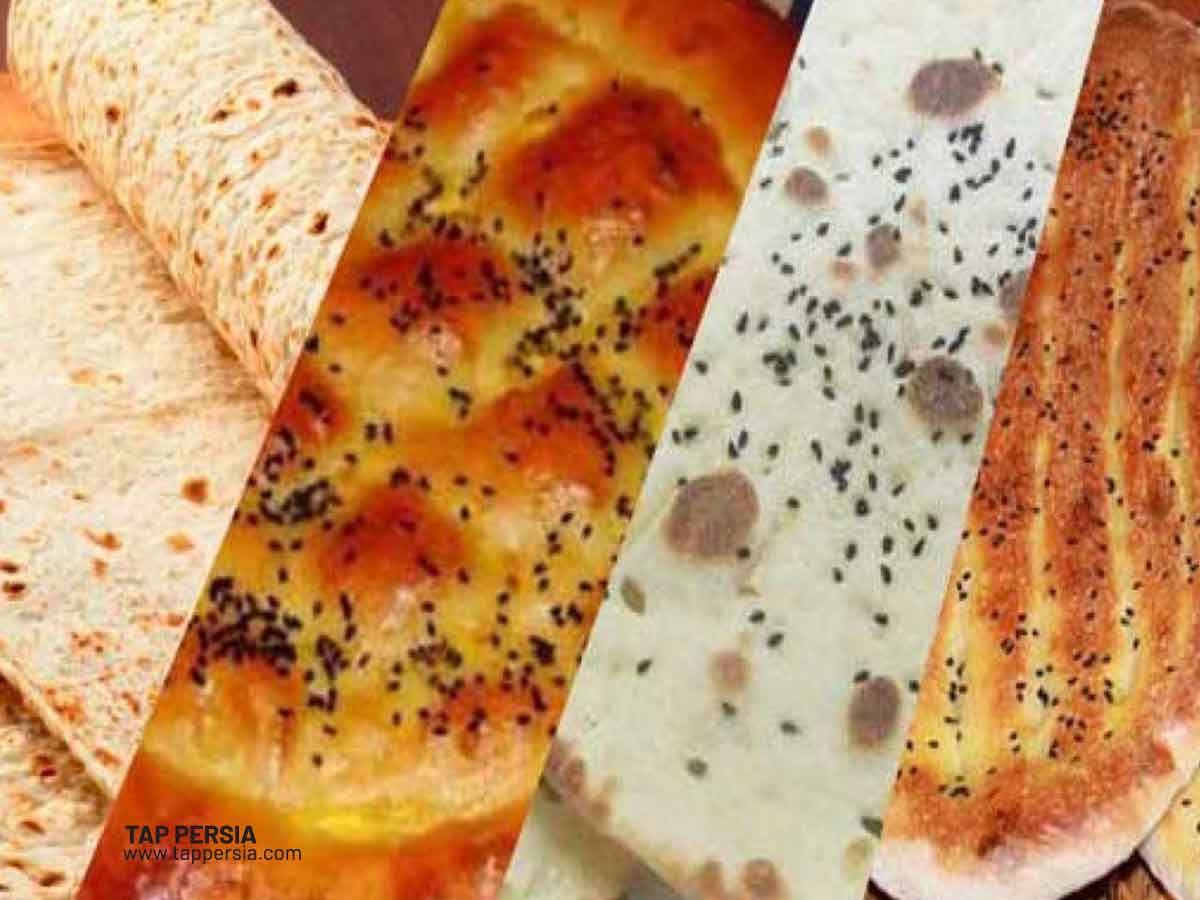
The History of Bread in Iran
The most important wheat-based food item produced worldwide is bread, which is also the most common food item consumed in Iran. So what is the name of Iranian bread? The word for bread in Persian is naan. Persian breads have been prepared and enjoyed from that time, as evidenced by the mention of Persian naan in the Sassanid inscriptions of the third century. Lavash is an example of Persian bread that was invented in Iran. Barbari is an example of Iranian bread that was brought to Iran by its neighbors. It is noteworthy that one of Tehran’s oldest bakeries, dating to the 19th century’s Qajar era, is situated in the Luti Saleh Passage, close to the Tehran Grand Bazaar.
Iranian Bread Oven and Ingredients
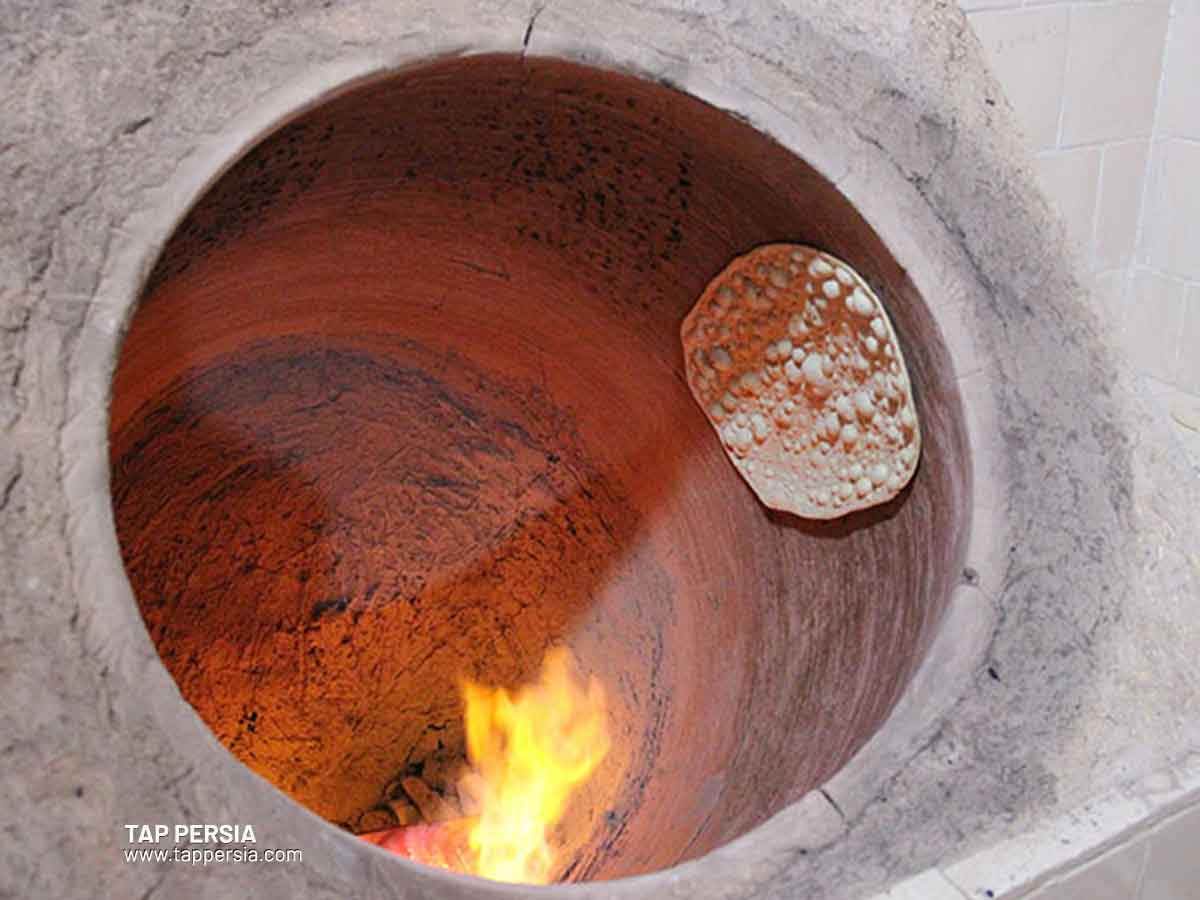
The bulk of Persian breads are made by mixing the most popular Iranian flour bread ingredients—water, oil, salt, and yeast dough—with wheat, barley, and white flour. Certain varieties of Persian bread are flavored with sesame seeds, black seeds, dried herbs, or caraway. Iranian sweet bread will benefit from the addition of some sugar. The bread oven used in Iran is built of clay and is known as a Tanoor (Tandoor).
Types of Bread in Iran
Iran has a large bread variety, and it is served with practically every Persian food. There are numerous fans of many Iranian bread varieties all throughout the world. Now let’s look at the many Persian bread varieties and their characteristics in Iran.
Several varieties of Persian bread may be baked all around the nation due to the huge range of products and people’s preferences. Several subcategories of Iranian breads are possible. Various types of Persian bread are distinguished by the type of flour they use, including bread made with wheat, barley, rice, etc. Iranian flatbread or raised and semi-raised bread are other terms for Persian naan that can be classed based on size and volume. The way of cooking may also be seen in the classification of Iranian bread.
Persian bread, for instance, can be cooked in an oven or on hot stones. Many Persian bread varieties, such as Persian sesame bread, potato bread, veggie bread, etc., are created by adding flavors to the basic components. Persian bread is categorized according to its texture, which might be doughy, soft, crispy, brittle, or dry.
All urban and rural areas of Iran make and consume a few typical varieties of Persian bread. The four most often consumed breads in Iran are Sangak, Barbari, Taftoon, and Lavash bread. Some of these names for Persian bread may be familiar to you. In Iran, ethnic groups or particular areas create and consume indigenous bread. Lako is the bread made locally on the Caspian Sea shore or Mashhadi bread is prepared in the Khorasan province. Iranian native bread comes in hundreds of varieties.
1.Sangak Bread
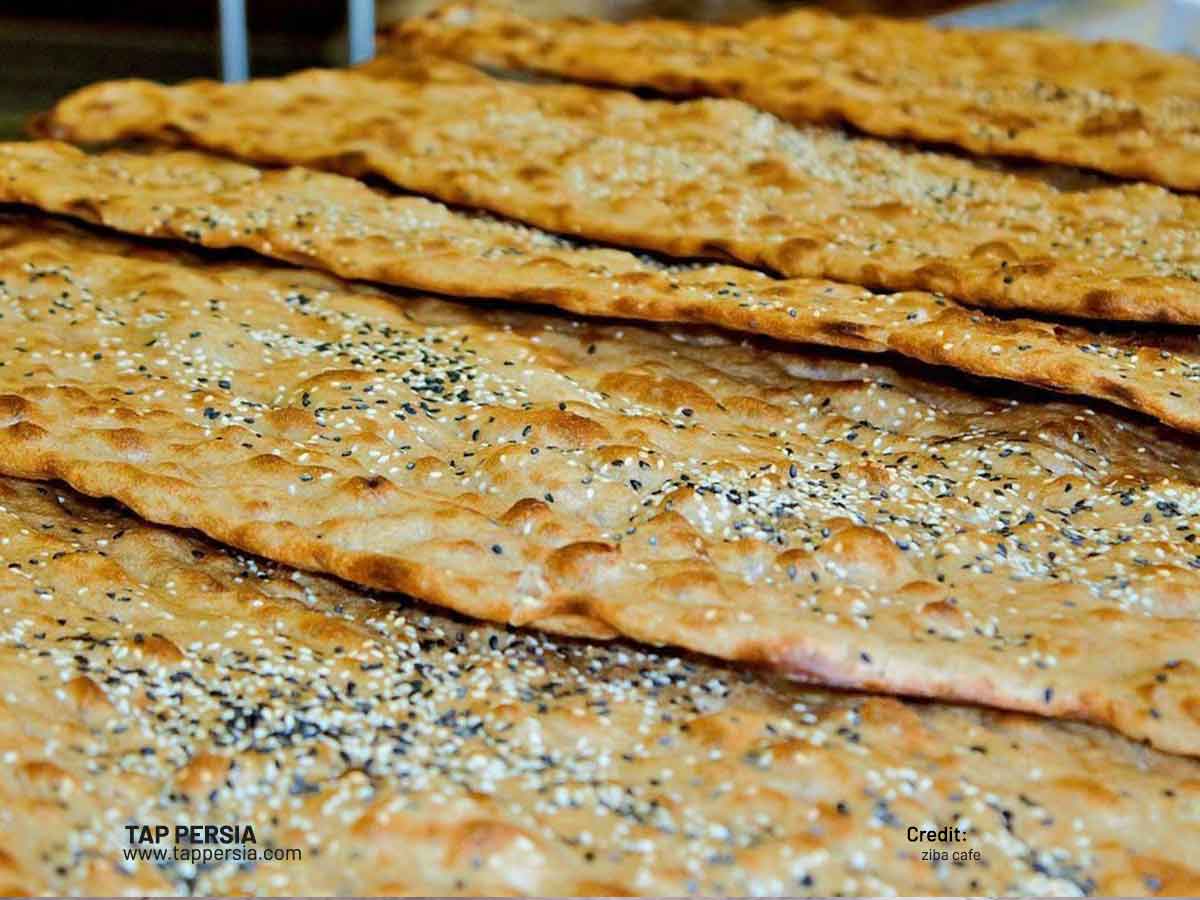
The whole wheat leavened flatbread called “nan-e sangak” is considered to be Iran’s national bread. There are two main types: regular and special, the latter of which has sesame and poppy seeds on top. It might take the shape of a triangle or a rectangle. Because the bread is often baked in a dome-shaped oven with a surface covered in pebbles and stones, the term sangak relates to the archaic way of baking bread, which means small stones.
The bread may be made such that it is about two feet long, which is plenty to serve a whole family. The principal bread of the Persian Army in the past was sangak, and each soldier carried a bag of pebbles to be used to cook the bread for the entire army.
Because it is made with whole wheat flour, sangak is considered to be the healthiest and most popular bread in Iran. This Persian wheat bread contains highly nutritious bran, making it a fantastic choice for diabetics. Sesame seeds are frequently sprinkled on top of sangak bread, which can be eaten for breakfast and other meals. Don’t forget to have Sangak bread with kebab and abgoosht when on a cuisine tour of Iran!
How to Make Sangak Bread?
The baker blends flour with water, salt, and yeast to produce sangak. The baker then lets the dough rest for a time before flattening it on a level surface, topping it with white or black sesame seeds, and placing it on the baking stones inside the oven. You may have the stunning result for breakfast with cheese, Persian omelets, or jam. Moreover, Iranians, who then add it to stew or abgoosht to soak before eating, cut Sangak Bread into little pieces. Telit is the name of this fantastic combo.
2.Barbari Bread

An Iranian leavened flatbread made with wheat is called nan-e barbari. The Barbars, an ethnic minority native to northeastern Iran that borders Afghanistan, brought Barbari Bread to Tehran during the Qajar era. Traditionally, it is shaped into a long oval shape and dusted with roomal, a flour glaze that gives the inside a delicate, airy texture while giving the outside a beautiful golden crust. The bread frequently has poppy, nigella, or sesame seeds added before baking in traditional tandoor ovens. The derogatory term was used to describe the Hazaras ethnic group is whence the word barbari originates.
They are thought to have introduced the custom of cooking nan-e barbari to Tehran and other regions of Iran first.
The thickest Iranian flatbread is called barbari, and it is roughly 70 centimeters long and 20 to 25 cm wide. Barbari is the only Persian bread that should not be consumed by dieters or those with digestive disorders.
Breakfast is best served with a piece of fresh Barbari and some butter, jam, or honey. 🙂
How to Make Barbari Bread?
Wheat flour, a touch of salt and sugar, yeast, a small bit of oil, and water should be combined to make the dough for the ideal Barbari bread. After allowing the dough to rest for a few hours, place part of it on an oiled surface. Make a large oval form similar to the one in the illustration below, then use a knife to put several longitudinal lines on it. Put some mixed yolk over it with a brush if you want to have that golden layer, and you may add sesame if you wish. The outcome will wow you after baking it for around 20 minutes.
3.Lavash Bread
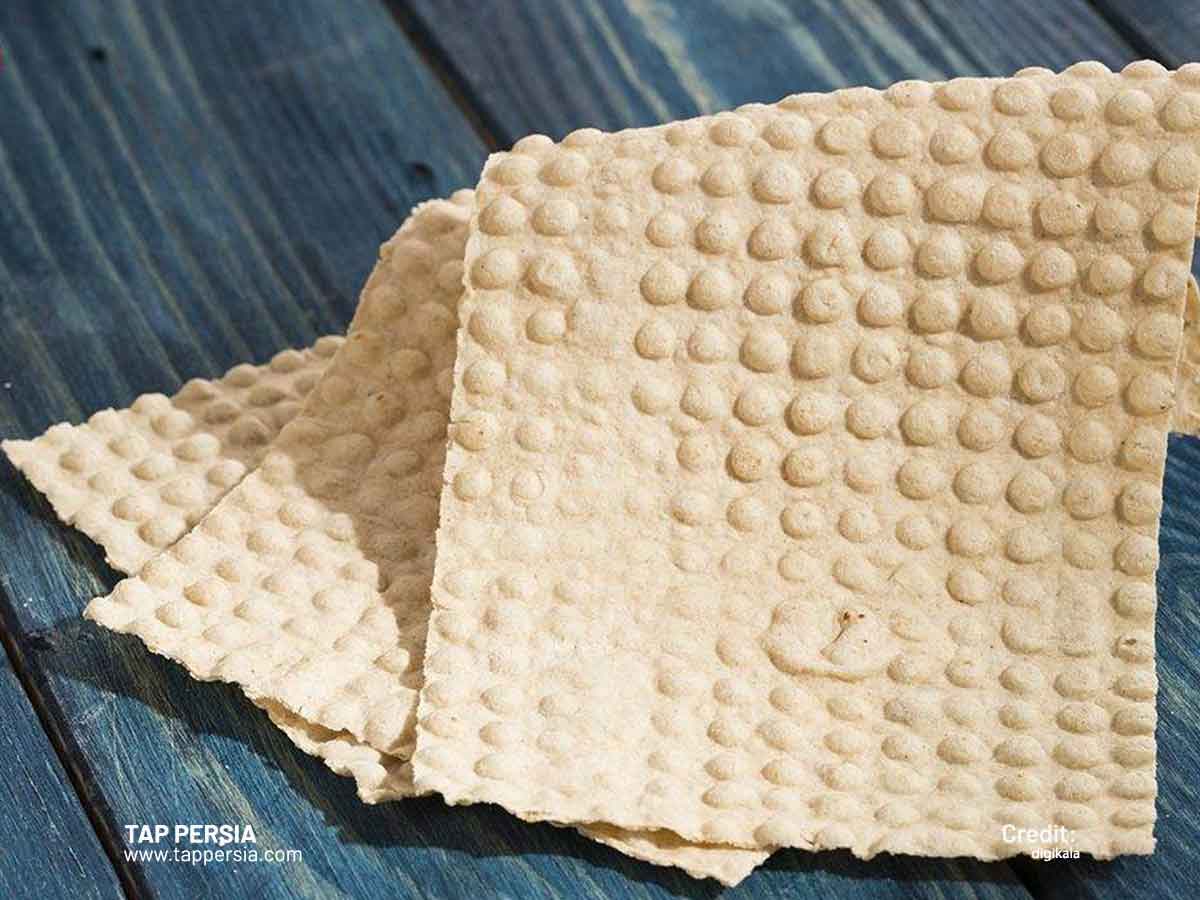
The thinnest bread in Iran is lavash, which has a 2-millimeter thickness. Due to its lightweight and thinness, it is marketed in packets and purchased in big quantities. Persian lavash is a soft flatbread baked in a tanoor, rotating oven, baking machine, or clay oven. It is among the most often consumed bread types in Iran. With the exception of soupy and watery meals, it is used with practically all Persian cuisines as the traditional Iranian bread (due to its low thickness).
This Persian bread comes in a wide range of flavors and textures. The shape and size of Iranian lavash bread might be round or rectangular. Despite the lack of bran in the wheat used to make lavash, it is one of the most widely consumed Iranian breads, especially in populated and industrialized areas. Lavash is the sole selection available in all of the nation’s supermarkets. Some bread varieties cannot be packaged and sold in stores because they must be consumed quickly.
How to Make Lavash Bread?
Put some flour on a level surface, place a little amount of dough there, flatten it with a rolling pin, and shape it into a square to produce a delectable Lavash bread. Next, you need to heat a pan and allow it to become hot before adding the flattened dough and cooking it in the pan like a pancake. Once the opposite side of the bread has finished cooking after a few minutes, you will have the ideal lavash bread in your hands.
Pay attention to the baking time. Lavash bread has to be checked several times since it is quickly overdone.
4.Taftoon Bread
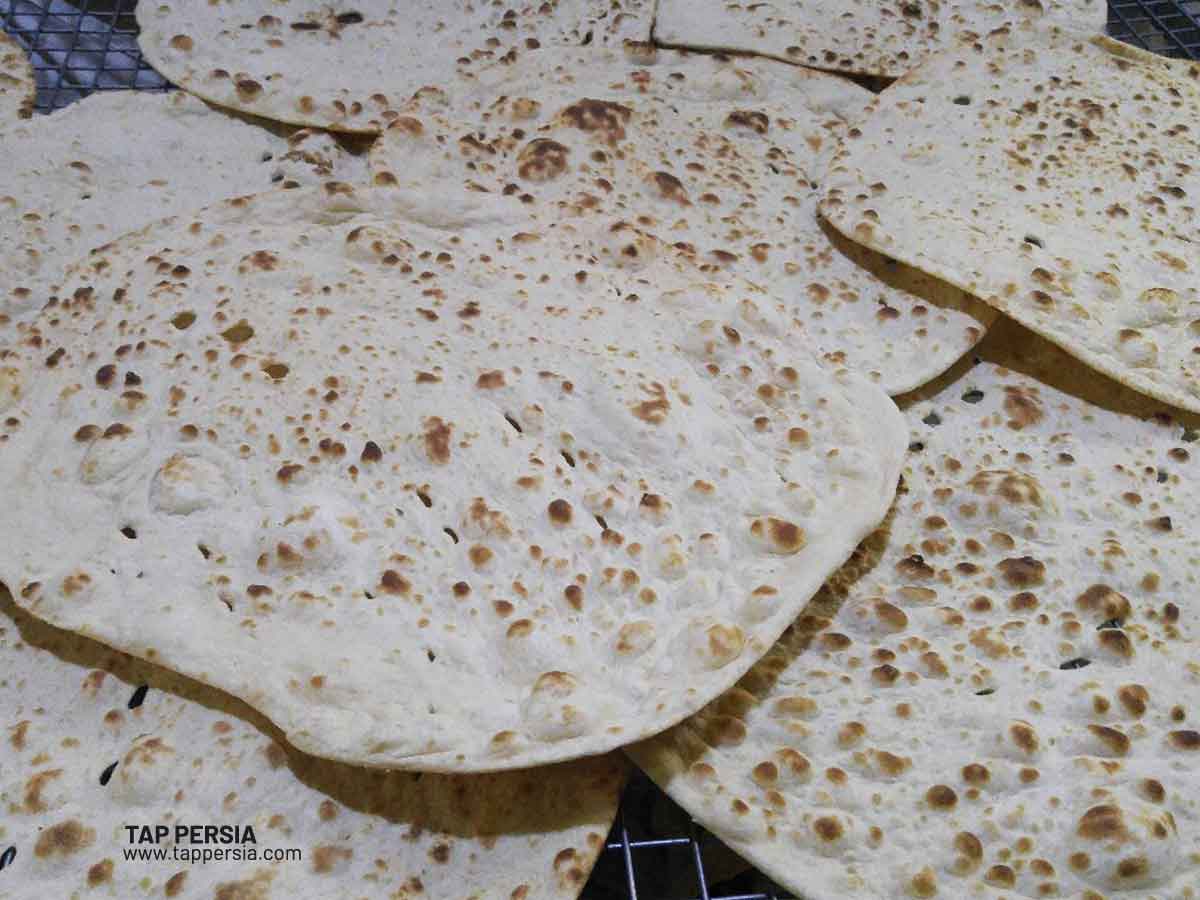
Taftoon is one of the most well-known Persian breads, and it is similar to Barbari bread in Iran. Yet unlike Barbari, this bread doesn’t include any baking soda. Iranian flatbread known as nan-e taftoon is often made with whole wheat flour, milk, eggs, and yogurt. The Persian term for heating or burning is whence the name Taftoon (or Taftun) of the Iranian bread is derived.
Ferdowsi in the Shahnameh references Taftoon, one of the first Persian breads. In the past, the only technique to make Taftoon was to bake bread dough in a clay oven; however, Taftoon is now frequently baked in rotary ovens or baking machines. In the meanwhile, some localities bake Taftoon with the addition of fresh or dried vegetables, nutrient-rich seeds, or other ingredients. Some of the locals and nomads also bake the bread in underground furnaces. These Taftoon bread varieties are referred to as Zanjani or Azeri.
It may be eaten alongside almost anything, including cottage cheese, tomatoes, and bell peppers. When on an Iran culinary tour, don’t forget to eat lavash or taftoon wrap kebab!
How to Make Taftoon Bread?
Taftoon bread shares all of its components with Barbari. The form is entirely different, though. You must roll out a thin sheet of dough and place it in the oven or over a hot pot. Taftoon is simpler to bake than Lavash bread because the oil maintains the soft texture longer.
We learned about several salty varieties of Iranian bread that may be eaten with meals. Nonetheless, Iranian cuisine also serves a variety of breads as desserts. All of these Persian loaves are delicious if you have a sweet craving.
5.Shirmal Bread
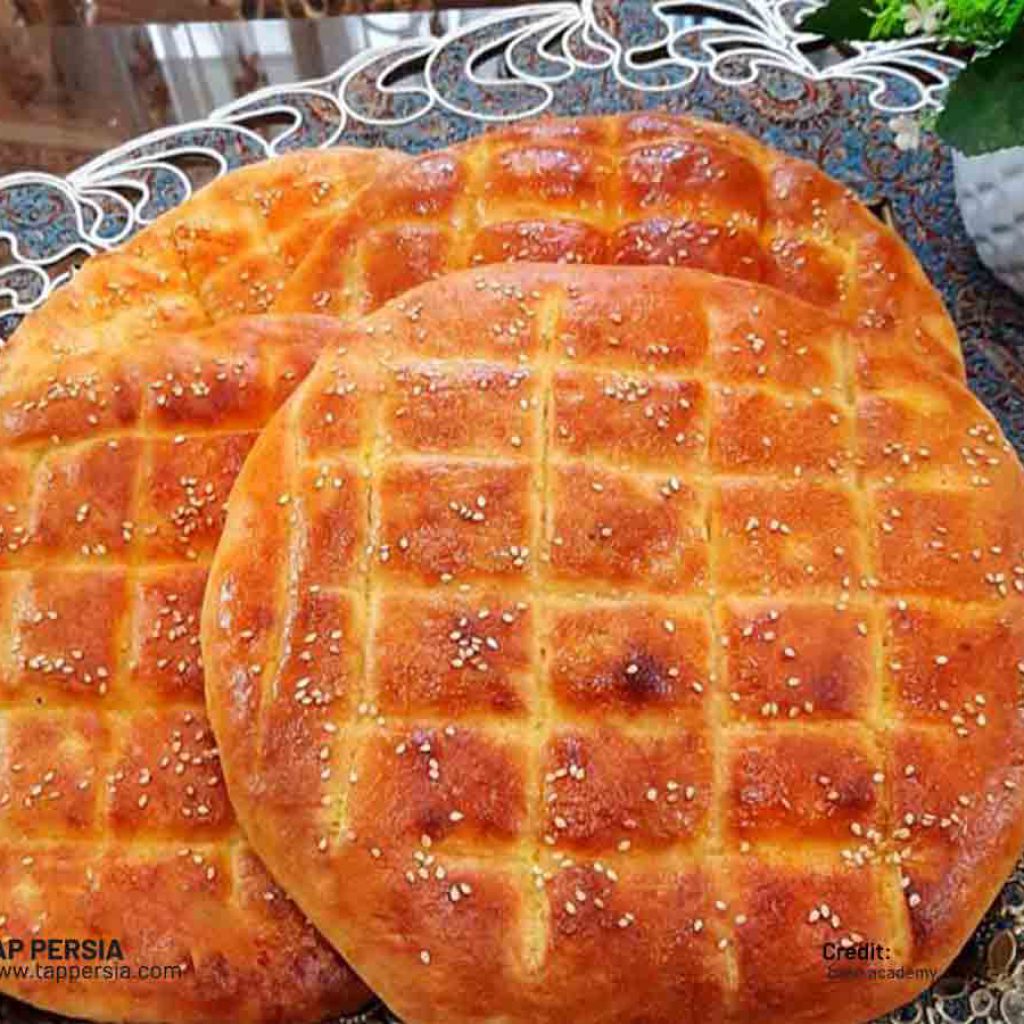
Shirmal, a traditional Iranian flatbread, is made using milk, Maida flour, yeast and saffron. It stands out for its vibrant yellow hue and powerful saffron taste. Warm soups or robust meat dishes like curries and kebabs are perfect pairings for the bread, which is traditionally baked in a tanoor oven.
The term “Shirmal” (milk bread) refers to one of the main components that give the flatbread its somewhat sweet flavor. Some cooks prefer to incorporate dried fruit into the dough for added sweetness. Shirmal is said to have Persian origins since many Persians went to India and Pakistan to learn how to make bread at that time.
How to Make Shirmal Bread?
There is only one significant distinction among the components used in this Persian bread. We can infer anything from its name, Shirmal. Shir means milk in Persian, hence when making the dough, you must use milk rather than water. By incorporating honey or sugar into the dough, you may modify the sweetness of Shirmal bread to suit your preferences.
A thick circle has to be formed by spreading out the dough on the table, rolling it flat with a rolling pin, adding some egg yolk to it, and baking it. You can eat your Shirmal bread once 30 minutes have passed.
Where to Find the Best Persian Bakeries and Bread in the World?
Since there are a lot of Iranians living in different parts of the world, you will encounter different Persian bakeries in most of the world’s major cities. All you need is to ask or just simply search on google.
Other Popular Iranian Breads
Some other types of common Iranian breads are:
6.Mashhadi Bread
This bread is appropriate for snacking because of its little size and light weight. It is prepared with wheat flour and is a traditional Khorasan bread from Iran. Taftoon specifically known as “Mashhadi bread” occasionally has fragrant veggies sprinkled over top.
7.Naan-e Jow (Barley Bread)
It is prepared using flour derived from barley. Although barley is less expensive than wheat in Iran, barley bread is much costlier than wheat bread since bakeries only produce a little amount of barley bread.
8.Naan-e Sabzijat (Vegetable Bread)
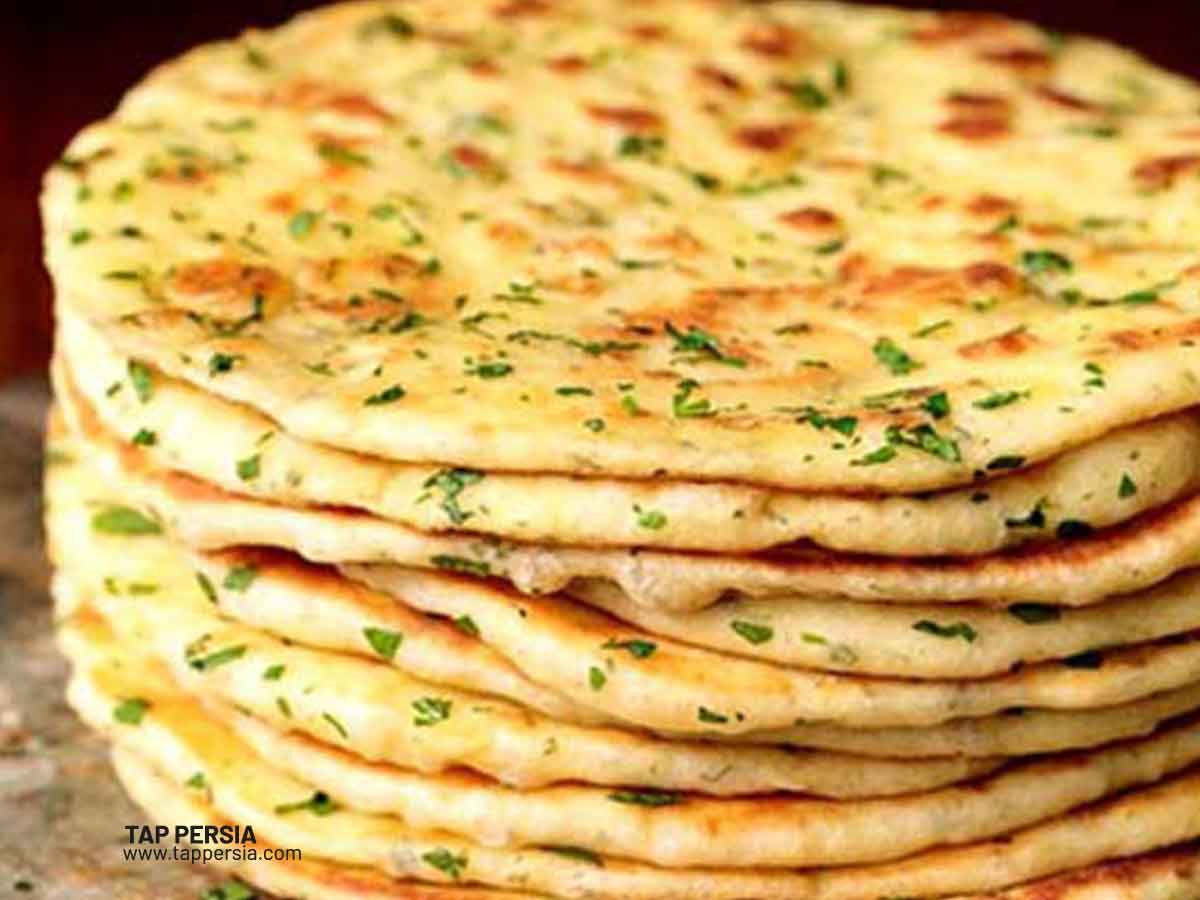
Parsley, dill, and tarragon are frequently included in the list of veggies needed to bake this particular kind of bread.
9.Naan-e Sandvichi
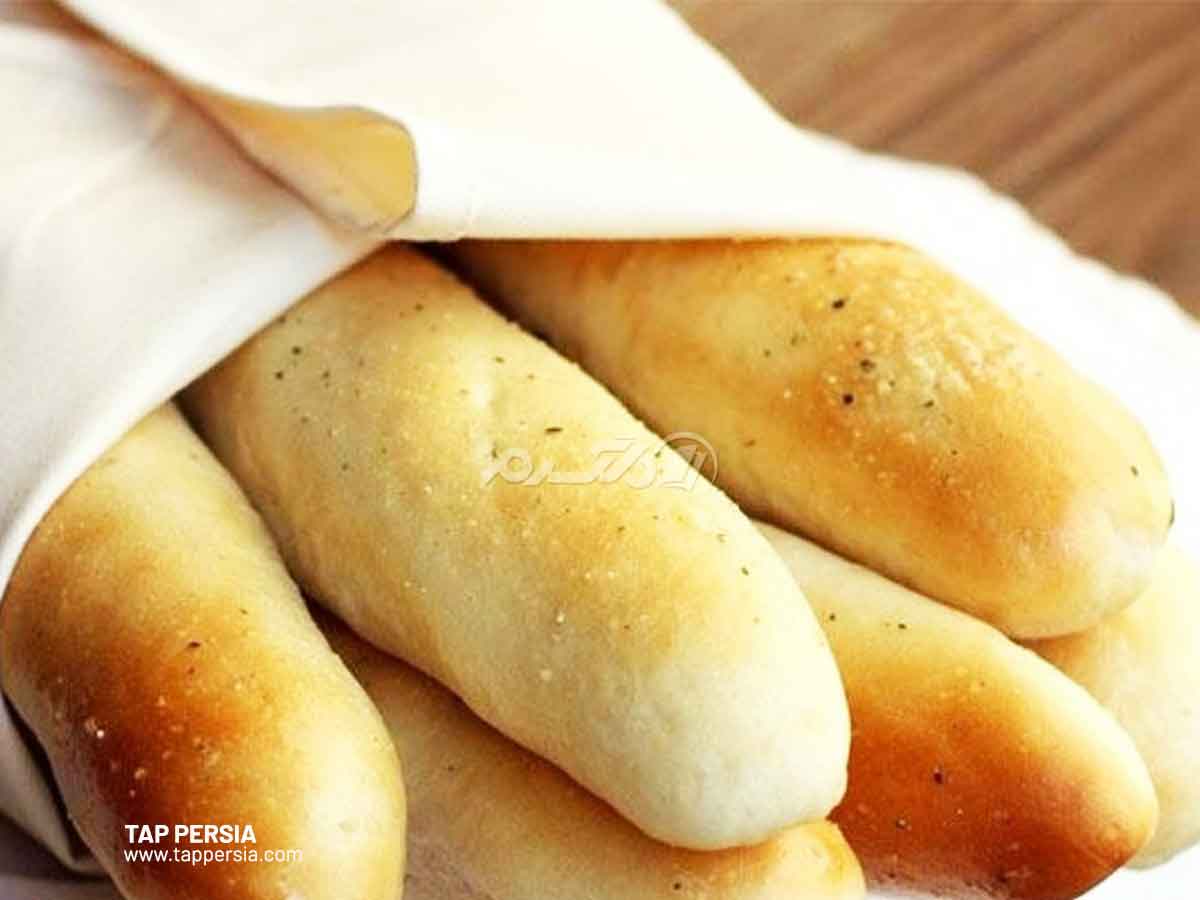
It is similar to baguette bread in that it is used as sandwich bread.
10.Naan-e Sibzamini (Potato Bread)
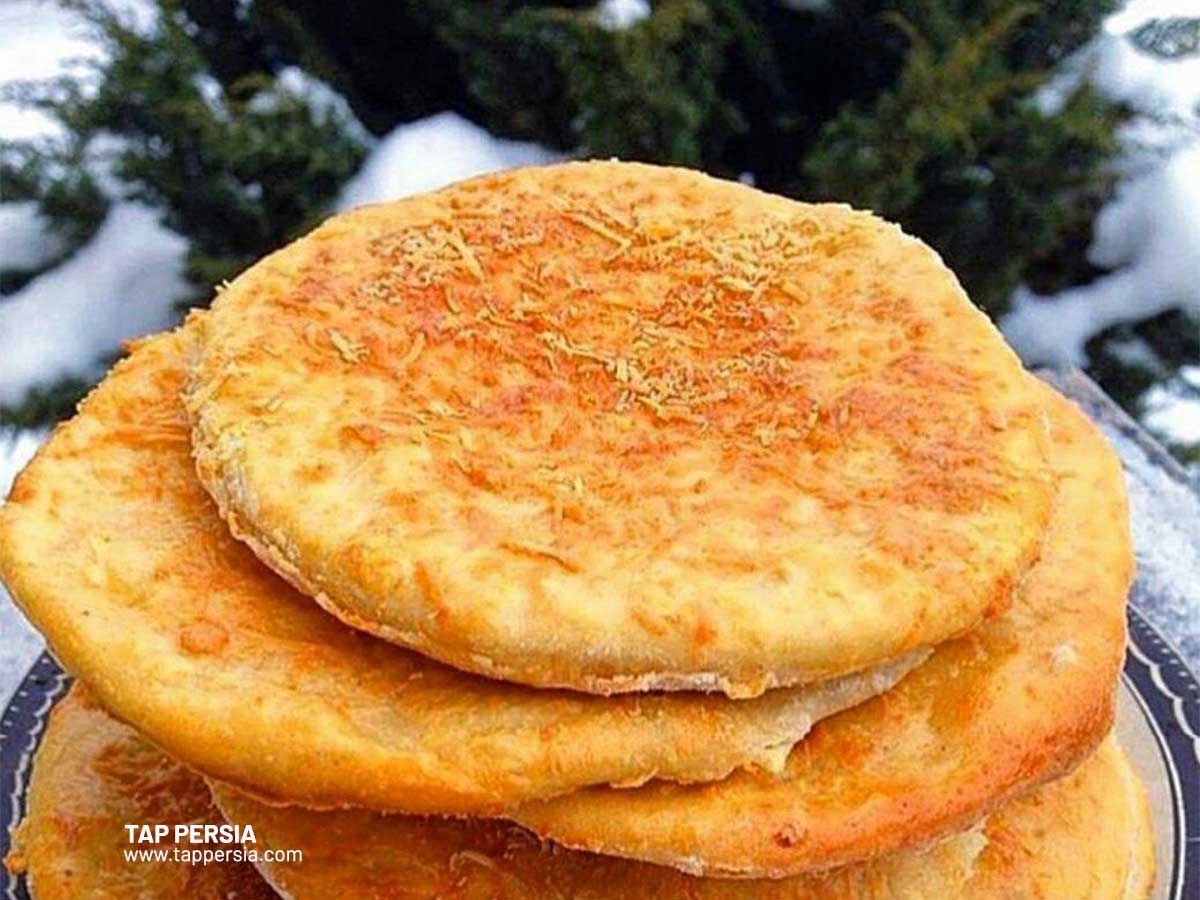
You may eat this bread by itself as a meal.
What is the Iranian bread called?
In Iran, the most often consumed breads are Sangak, Barbari, Taftoon, and Lavash. Iranian breads come in a variety of flavors, shapes, sizes, textures, colors, and compositions.
Is Sangak bread Persian?
“Sangak” is the Persian word for a little stone. Sesame seeds cover this traditional Iranian flatbread, which is cooked in the oven on a bed of tiny river stones. The Persian army’s bread, known as sangak bread, was first mentioned in the 11th century.
Is Lavash from Iran?
Lavash is frequently said to have originated in Armenia, however, other academics believe Iran is more likely to be the place. The Middle East is usually considered to be the origin, according to food historian Gil Marks.



I have recently learned of a bread made by the Lurish people called Barkoo. Is that another name for any of these breads or is this another type of bread? I have seen people of a nomadic tribe make that very thin bread over an open fire. The way they make it so thin is an amazing and beautiful process.